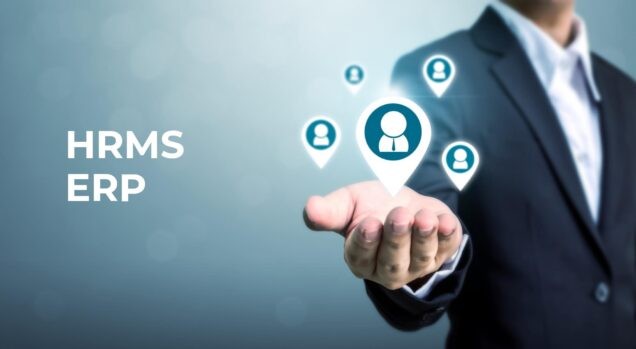Introduction
In an era where digital transformation is no longer optional, businesses are turning to software solutions to streamline operations and enhance efficiency. Enterprise Resource Planning (ERP) and Human Resource Management Systems (HRMS) are two pivotal tools that help organizations manage their resources and workforce more effectively. This blog will delve into the key aspects, benefits, and considerations of ERP and HRMS software, providing a comprehensive guide for businesses looking to optimize their processes.
1. What is ERP Software?
ERP software is designed to integrate and automate essential business processes across an organization. By consolidating various functions such as finance, supply chain, operations, reporting, and manufacturing into one system, ERP software provides a unified view of business operations. This integration helps in reducing silos, improving data accuracy, and enhancing decision-making processes.
In addition to integration, ERP software offers real-time data analysis and reporting capabilities. These features enable businesses to gain insights into performance metrics and trends, facilitating strategic planning and timely interventions. Modern ERP systems also incorporate advanced technologies like artificial intelligence (AI) and machine learning (ML) to further optimize business processes.
2. Benefits of ERP Software
Implementing ERP software brings numerous benefits to an organization. One of the primary advantages is improved operational efficiency. By automating repetitive tasks and streamlining processes, ERP systems reduce the time and effort required to manage day-to-day operations. This efficiency translates into cost savings and allows employees to focus on more strategic activities.
Another significant benefit is enhanced data accuracy and consistency. With a centralized database, ERP software ensures that all departments have access to the same information, reducing the risk of errors and discrepancies. This consistency is crucial for accurate reporting, compliance, and informed decision-making, ultimately leading to better business outcomes.
3. What is HRMS Software?
HRMS software focuses on automating and managing human resource functions within an organization. These systems cover a wide range of HR activities, including recruitment, onboarding, payroll, benefits administration, performance management, and employee self-service. By integrating these functions into a single platform, HRMS software helps HR departments operate more efficiently and effectively.
In addition to automation, HRMS software provides valuable insights into workforce data. HR professionals can use these insights to identify trends, manage employee performance, and make informed decisions about hiring and development. This data-driven approach helps organizations align their HR strategies with overall business goals, improving employee satisfaction and retention.
4. Advantages of HRMS Software
HRMS software offers several advantages that enhance HR operations and employee experiences. One key benefit is improved payroll accuracy and efficiency. Automating payroll processes reduces the likelihood of errors and ensures timely and accurate salary payments, which is crucial for employee satisfaction and trust.
Another advantage is the empowerment of employees through self-service portals. HRMS software enables employees to manage their personal information, benefits, and time-off requests without needing to contact HR directly. This self-service functionality not only improves employee satisfaction but also frees up HR staff to focus on strategic initiatives and employee engagement.
5. Key Features to Look for in ERP Software
When selecting ERP software, it’s essential to consider features that align with your business needs. Scalability is a critical factor, as the software should be able to grow with your business. Look for systems that offer flexible modules and can be customized to fit your specific requirements.
Integration capabilities are also vital. Ensure that the ERP software can seamlessly integrate with your existing systems, such as CRM, accounting, and supply chain management tools. This integration will enhance data flow and provide a comprehensive view of business operations, facilitating better decision-making and operational efficiency.
6. Essential Modules of ERP Software
ERP software typically includes several core modules that address different business functions. The financial management module handles accounting, budgeting, and financial reporting. This module is essential for maintaining accurate financial records and ensuring regulatory compliance.
Another important module is supply chain management, which oversees inventory, procurement, and logistics. By optimizing supply chain processes, this module helps businesses reduce costs, improve inventory management, and enhance customer satisfaction. Other common modules include manufacturing, customer relationship management (CRM), and human resources.
7. Important Considerations for HRMS Software Selection
Choosing the right HRMS software involves evaluating several factors. Scalability is crucial to accommodate future workforce growth. Ensure that the software can handle an increasing number of employees and HR activities without compromising performance.
Compliance is another critical consideration. The HRMS software should adhere to local labor laws and regulations, ensuring that your HR practices are legally compliant. Look for features such as automated tax calculations, compliance reporting, and updates to labor laws to stay current with regulatory changes.
8. Trends Shaping ERP and HRMS Software
The landscape of ERP and HRMS software is continuously evolving, driven by technological advancements. Cloud-based solutions are becoming increasingly popular due to their flexibility, scalability, and cost-effectiveness. Cloud ERP and HRMS systems allow businesses to access their data from anywhere, facilitating remote work and collaboration.
Artificial intelligence (AI) and machine learning (ML) are also making significant impacts. These technologies enhance ERP and HRMS software by providing predictive analytics, automating routine tasks, and offering personalized recommendations. For example, AI can predict inventory needs based on historical data, while ML can identify patterns in employee performance to inform development programs.
9. Case Studies: Successful Implementation Stories
Many organizations have successfully implemented ERP and HRMS software, reaping significant benefits. For instance, a manufacturing company might implement an ERP system to streamline its production processes, resulting in reduced lead times and improved product quality. By integrating inventory management with production planning, the company can optimize its supply chain and reduce costs.
Similarly, a retail business could use HRMS software to manage a large, dispersed workforce. By automating payroll and benefits administration, the company can ensure timely payments and compliance with labor laws. The self-service portal empowers employees to manage their own information, improving satisfaction and reducing administrative workload for HR staff.
10. Tips for Implementing ERP and HRMS Software
Successful implementation of ERP and HRMS software requires careful planning and execution. Start by defining clear objectives and requirements. Understand what you want to achieve with the software and identify the key features and functionalities needed to meet those goals.
Engage stakeholders from different departments early in the process. Their input is crucial for selecting the right software and ensuring that it meets the needs of all users. Provide comprehensive training to ensure that employees are comfortable using the new system. Continuous support and regular assessments are also essential to measure the software’s impact and make necessary adjustments.
11. Future Outlook: Evolving ERP and HRMS Landscape
The future of ERP and HRMS software is promising, with ongoing advancements in technology driving innovation. Enhanced AI capabilities will continue to improve predictive analytics and automation, enabling businesses to make more informed decisions and streamline operations further.
Integration with the Internet of Things (IoT) is another emerging trend. IoT devices can collect real-time data from various sources, feeding it into ERP and HRMS systems. This integration will provide businesses with deeper insights and greater control over their operations. Additionally, advancements in user experience design will make these systems more intuitive and accessible, driving higher adoption rates.
12. Conclusion
ERP and HRMS software are essential tools for modern businesses seeking to optimize their operations and manage their workforce effectively. By integrating and automating core processes, these systems enhance efficiency, accuracy, and decision-making capabilities. Investing in the right ERP and HRMS software tailored to your organization’s needs can provide a significant competitive edge, driving growth and success in a rapidly evolving business environment.




